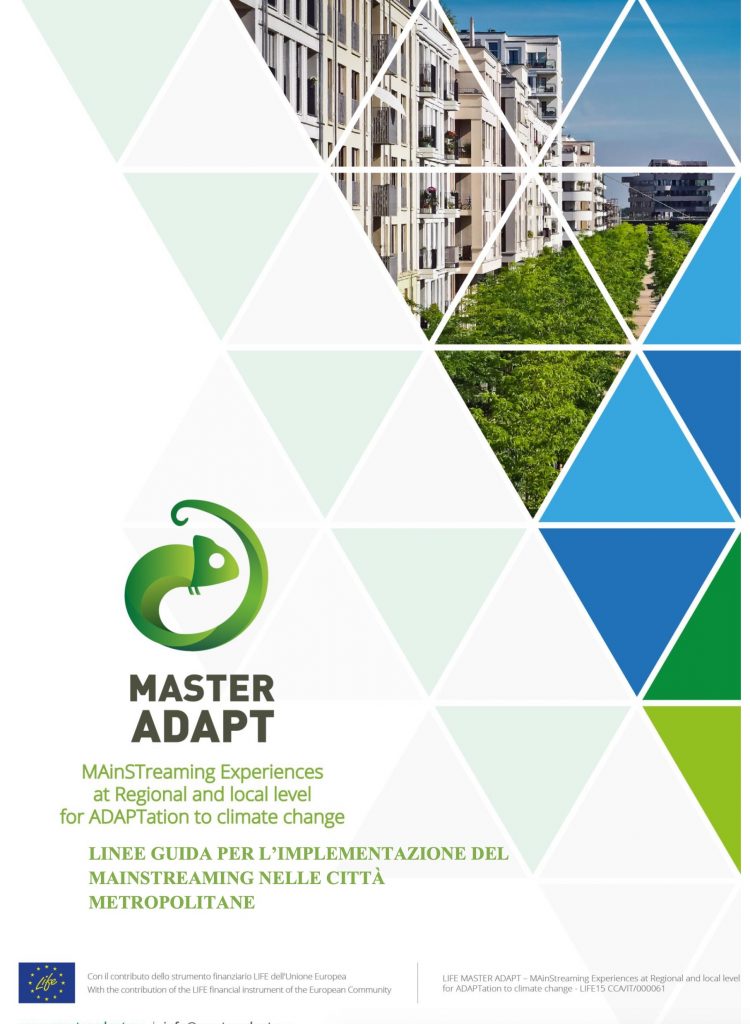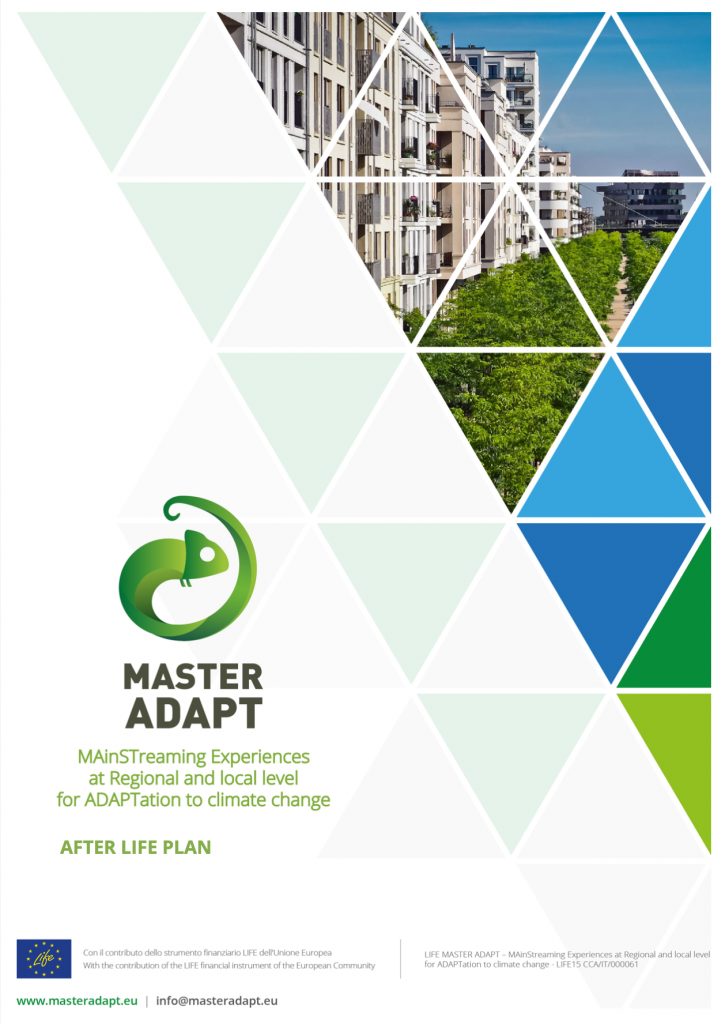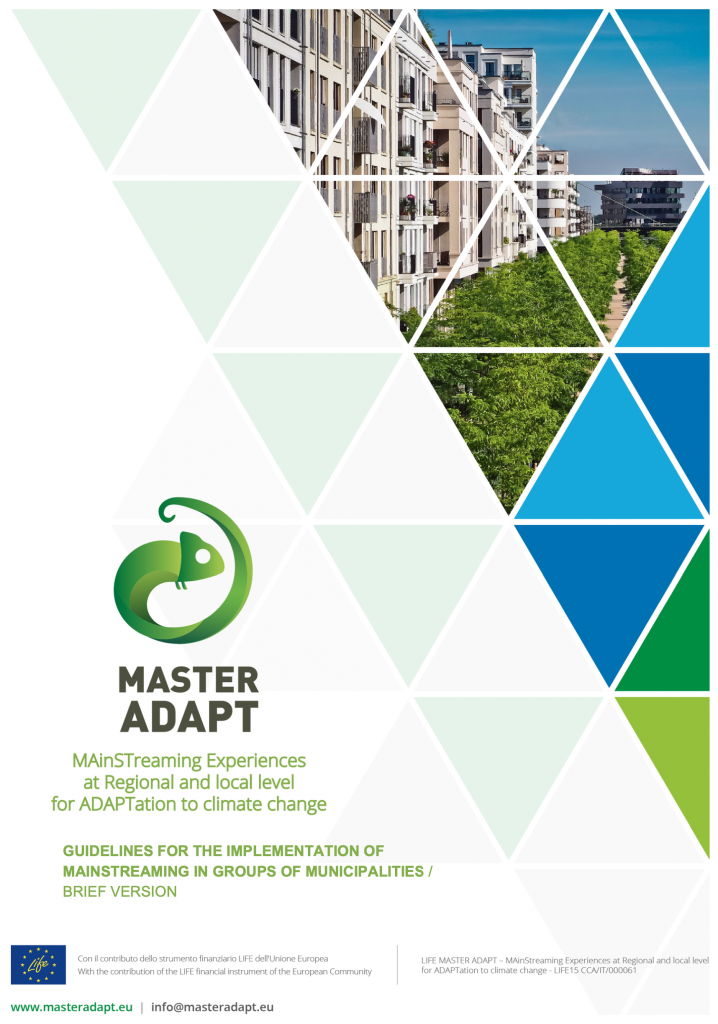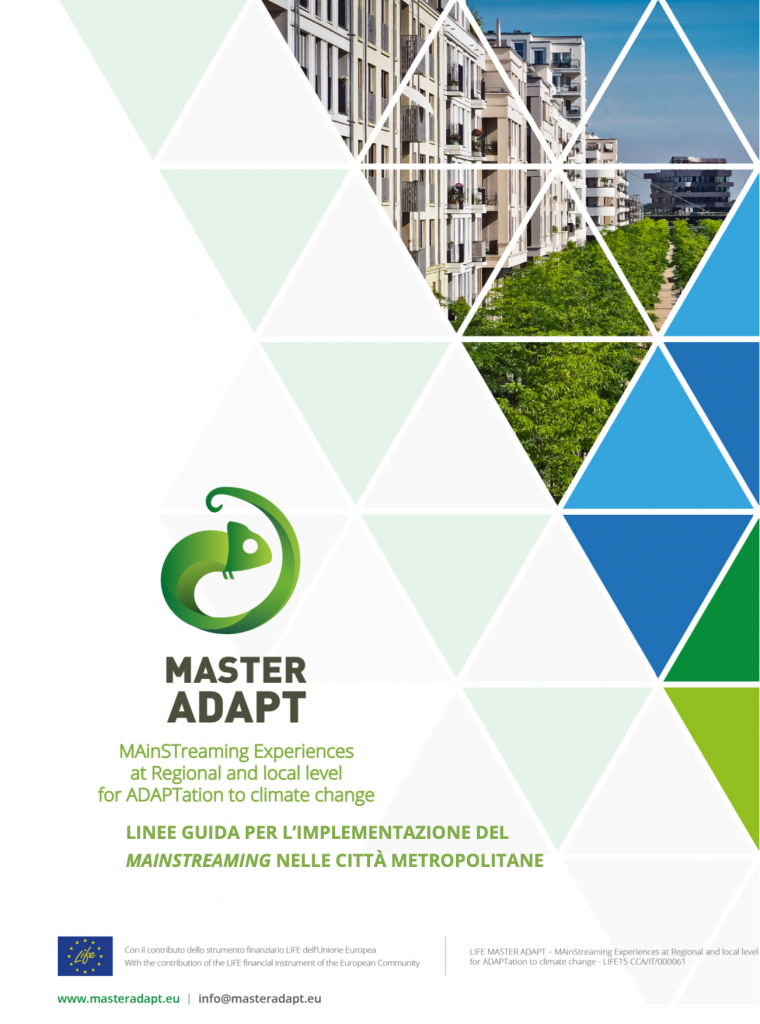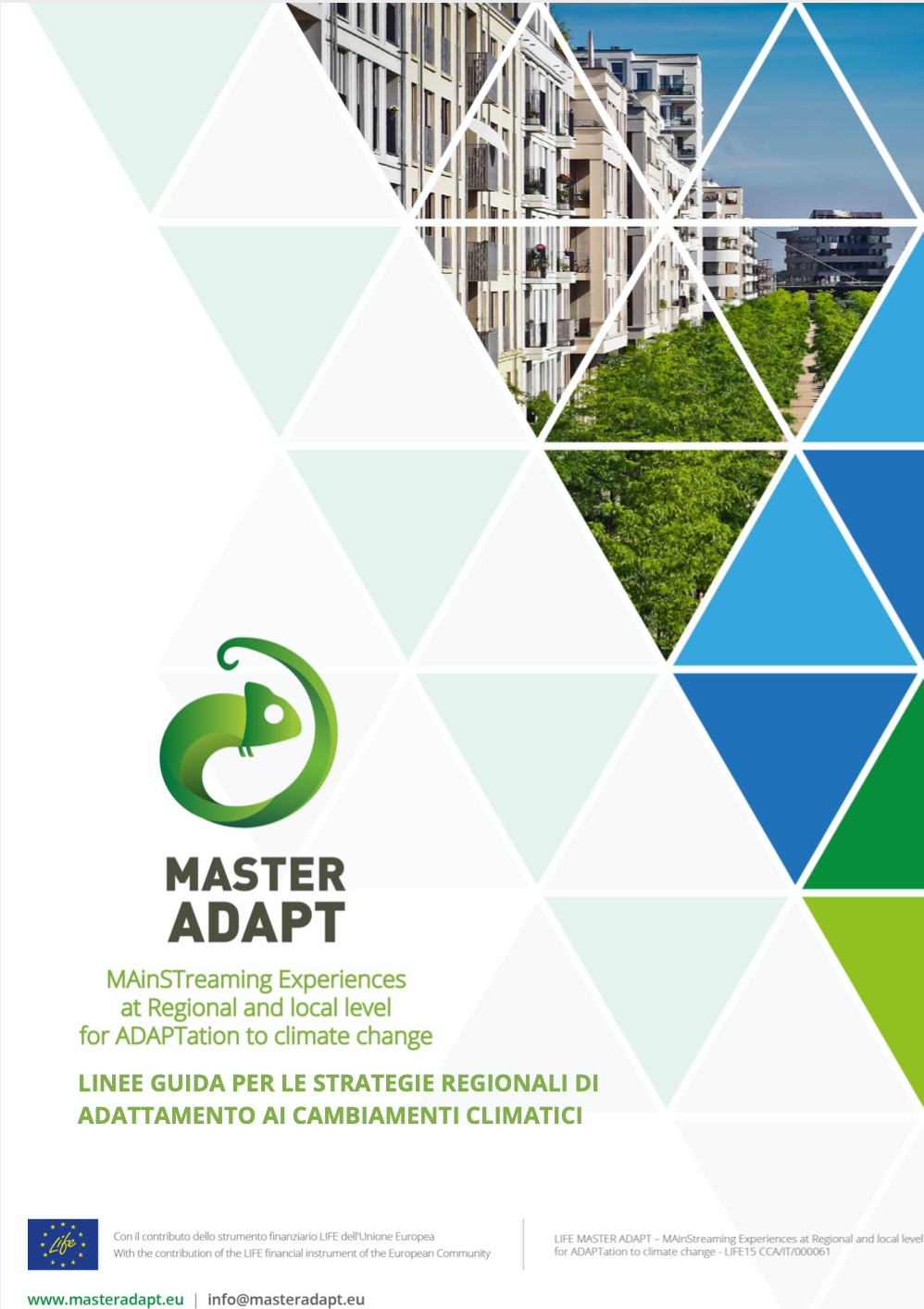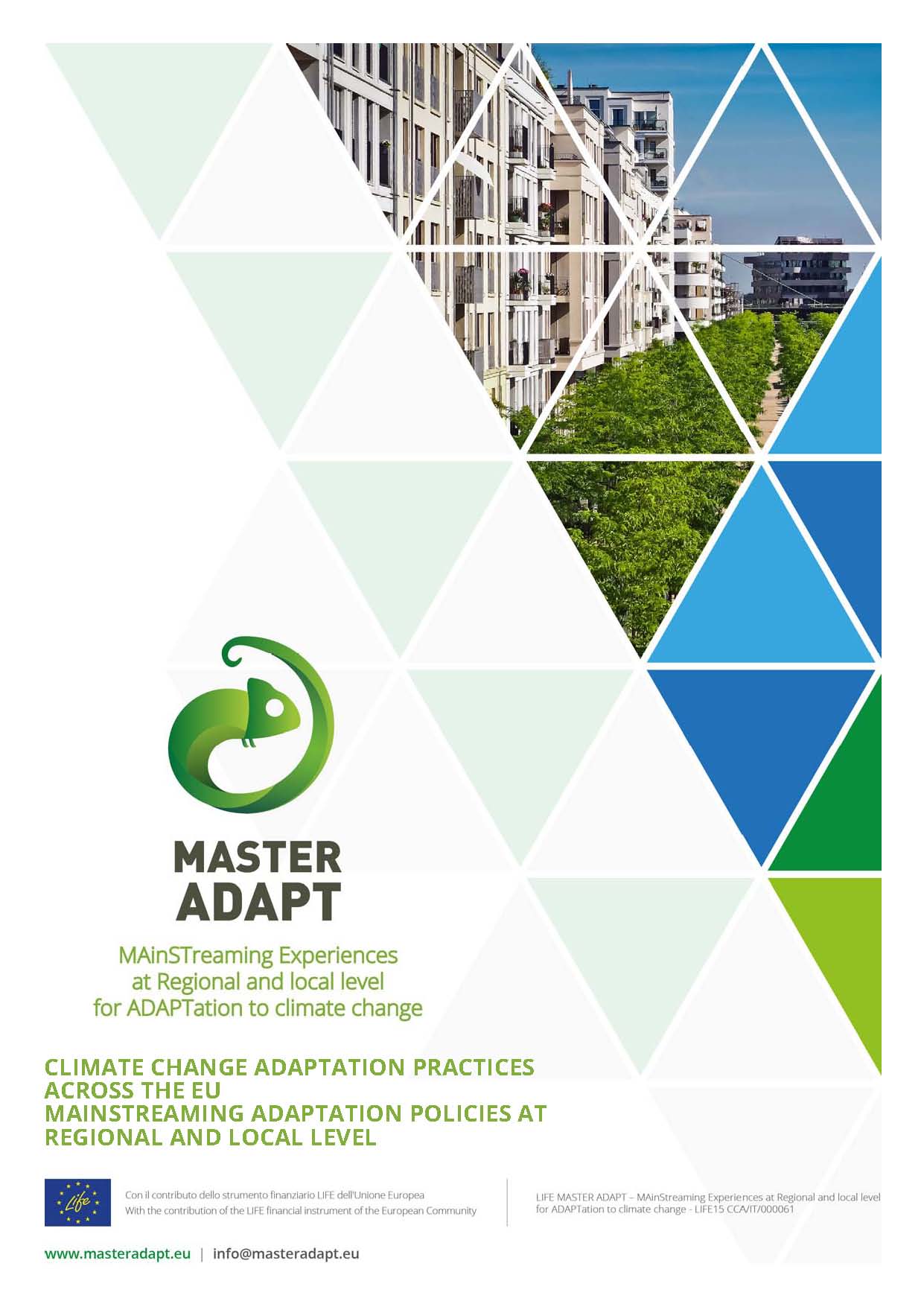TOOLS
The ADAPT MASTER project involves the creation of various tools available to Regions and Metropolitane Areas and Municipalities for mainstreaming adaptation to climate change.
Below we will publish all the MASTER ADAPT tools.
MASTER ADAPT After LIFE Plan
The After LIFE Plan is the document aimed at strengthening the follow-up of the action on awareness on climate change after the end of MASTER ADAPT project.
The After LIFE Plan is therefore structured in continuity and coherence with the mainstreaming approach and indicates the fundamental actions (research, communication, dissemination, networking, exchange and updating activities) in the period 2020-2025 to feed the mainstreaming process of adaptation to climate change activated with the tools and methods of MASTER ADAPT. In general, the activities of this program will be divided according to the specific competences of the partners, as better detailed in the document.
MASTER ADAPT “Guidelines for the implementation of mainstreaming in groups of municipalities” (Action C3)
This document is addressed to Local Administrators, technicians and officials of the Public Administrations and to the Local Government Bodies of the member Municipalities ,that have joined, are in the process of joining or are not joining various and diverse forms of Groups of Municipalities.
The main purpose of the document is to recommend, to those who – both in technical and political roles – within these bodies, deal with spatial planning, a method for mainstreaming the actions for adaptation to climate change in the Plans, Strategies, and Policies of the Groups of Municipalities, following a vertical and horizontal process.
The document is structured in two parts: – the first part contains a general introduction to the topic and context within which adaptation to climate change in public administrations is acting today; – the second partcontains the guidelines for the mainstreaming of adaptation to climate change within the territorial governance processes assigned to groups of municipalities. This section deepens the guidelines to facilitate the work for the Municipalities concerned.
MASTER ADAPT “Guidelines for the implementation of mainstreaming in metropolitan cities” (Action C3)
This document is mainly addressed to local administrators, technicians and officials of the Public Administrations and to the local Government Bodies of the Metropolitan Cities.
The main purpose of the document is to recommend, to those who – both in technical and political roles – within these bodies, deal with spatial planning, a method for mainstreaming the adaptation to climate change in the Plans, Strategies, and Policies of the Metropolitan Cities, following a vertical and horizontal process.
The document is structured in two parts: – the first part contains a general introduction to the topic and context within which adaptation to climate change in public administrations is acting today; – the second partcontains the guidelines for the mainstreaming of adaptation to climate change within the territorial governance processes specifically required by metropolitan cities.
MASTER ADAPT “Guidelines for the regional adaptation strategy” (Action C2)
This document therefore defines guidelines for CCA strategies on a regional scale, with the related tools and a conceptual and operational guide for the elaboration and implementation.
The guide is mainly addressed to the structures of regional administrations and aims to provide a useful tool to address – through specific sectoral and territorial adaptation strategies – the process of integrating adaptation to climate change into the “ordinary” planning tools and programming.
The first part of the document contains a guide for the preparation and implementation of a regional strategy for adapting to climate change.
The second part illustrates the methods and tools considered most effective for the development and implementation of the strategy.
MASTER ADAPT English translation of an extended abstract of the “Policy Guidance for setting adaptation objectives” (Action C1-C4)
The Policy Guidance for the setting of adaptation objectives at the local and regional level are linked to the Guidelines for the analysis of climate impacts on the territory, which were produced within the project LIFE MASTER ADAPT and presented in the document “Guidelines, principles and standard procedures for climate analysis and vulnerability assessment at the local and regional level” (“Linee guida, principi e procedure standardizzate per l’analisi climatica e la valutazione della vulnerabilità a livello regionale e locale”).
The present Policy Guidance brings forth a method to deal with developing adaptation objectives. The process is split into four logic passages:
1) comprehension of the goals or of the general adaptation aims,
2) definition of an overall vision for the development of the territory in climate change conditions,
3) identification of general and specific objectives and, finally,
4) suggestions of possible actions (options) to achieve the set objectives.
The document presents some practical cases, developed by the project LIFE MASTER ADAPT as examples and clarifications about the theoretical formulation of the method.
A synthesis (chapter 3) of the main financial sources for adaptation to climate change is also offered, which are a necessary element towards the practical implementation of the theories here studied.
To complete all information, the last part of the document (chapter 4) synthetically describes the landscape regarding the main adaptation initiatives at European level.
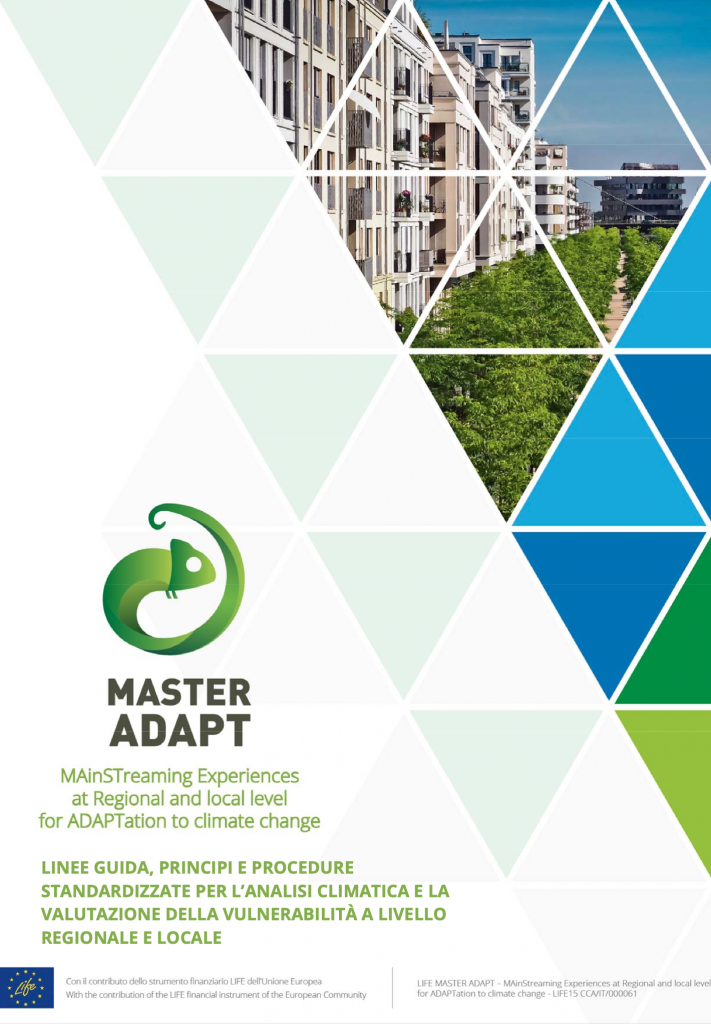
MASTER ADAPT “Guidelines, principles and a standardized procedures for climate analysis and vulnerability assessment at regional and local level” (Action A1)
This Report constitute the second deliverable of the preparatory action A1 – Climate analysis and vulnerability assessment at the Regional level realized within the LIFE MASTER ADAPT project, with the coordination of the Institute for Environmental Protection and Research and the contributions of Ambiente Italia srl, Lombardia Foundation for the Environment (with Ecometrics srl), IUAV University of Architecture of Venice, University of Sassari and Sardinia Region (project leader). Policy Guidance for the setting of adaptation objectives at the local and regional level are linked to the Guidelines for the analysis of climate impacts on the territory, which were produced within the project LIFE MASTER ADAPT and presented in the document “Guidelines, principles and standard procedures for climate analysis and vulnerability assessment at the local and regional level” (“Linee guida, principi e procedure standardizzate per l’analisi climatica e la valutazione della vulnerabilità a livello regionale e locale”).
The Guidelines, in addition to benefiting from the previous expertise of authors and contributors in the field of vulnerability analysis to climate and risk changes, are based on the experience gained by the partnership under the A1 action on the occasion of the realization of the first deliverable of the project “Report on climate analysis and vulnerability assessment results in the pilot region (Sardinia Region) and in the areas targeted in Action C3”.
The aim of this document is to provide regional and local administrators, involved in institutional paths aimed at adapting to climate change in their territories, the basic operational elements essential for the definition of a framework of scientific knowledge that is a prerequisite for planning the most appropriate adaptation measures.
MASTER ADAPT “Report on Climate Change Adaptation practices across the EU” (Action A2)
A survey and analysis at European level on different, innovative and practical approaches of climate and adaptation policies at regional and local level. The survey have seen the participation of: 1 National EU State, 2 cities (London, Rotterdam and Copenhagen), 14 Regions e 3 Metropolitane Areas
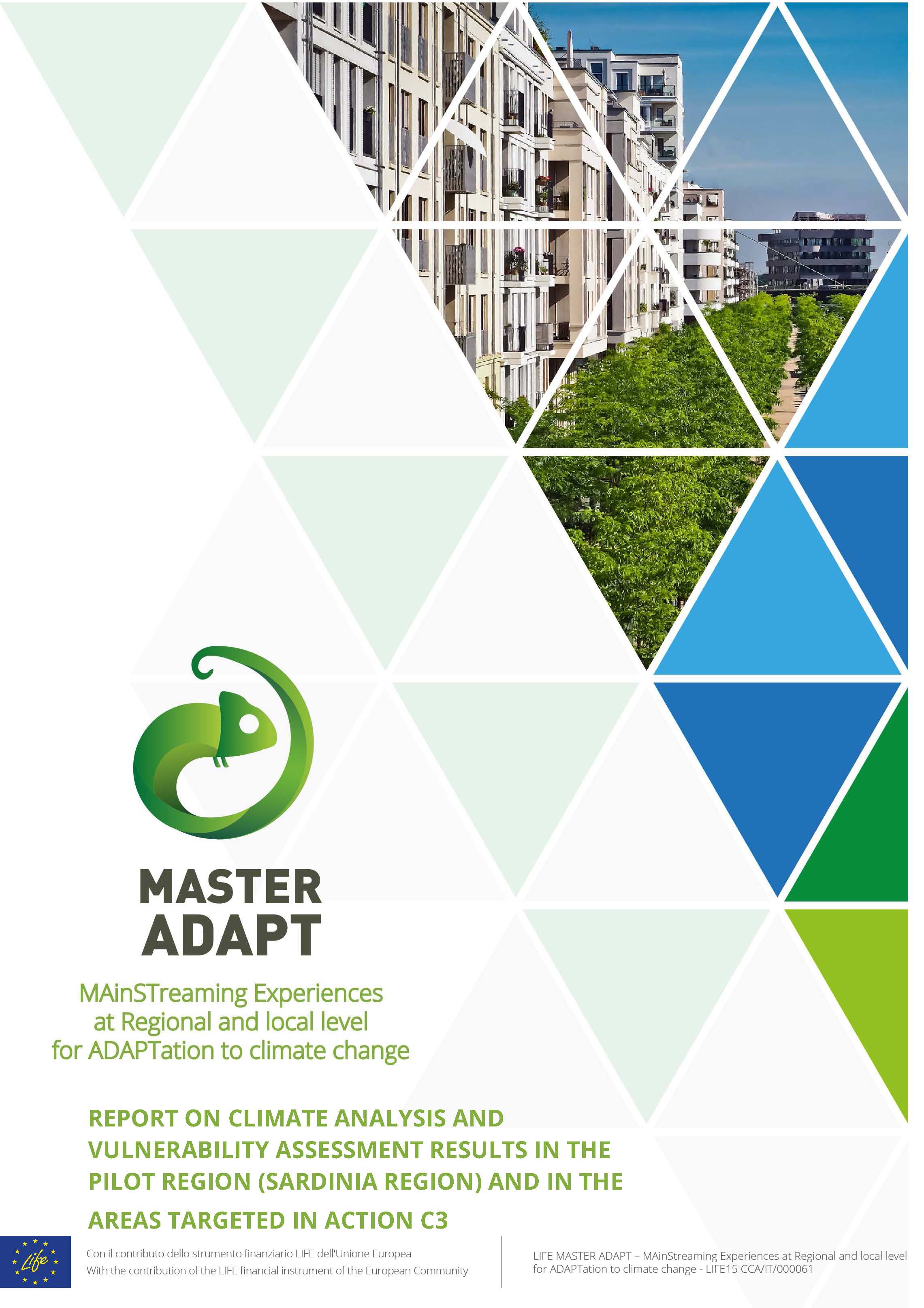
MASTER ADAPT “Climate analysis and vulnerability results in the target Region (Sardinia) and in the areas targeted in Action C3” (Action A1)
Among the main objectives of the LIFE MASTER-Adapt Project, the identification and test of innovative tools of multi-level governance is addressed to support Regions and local authorities (cities and groups of towns) in defining and developing adaptation strategies and policies. In particular, the project builds on existing developments in Lombardy and aims at creating a scalable methodology with the purpose to optimise and facilitate the targeting and the integration of Regional policies in different sectors with respect to climate change adaptation (mainstreaming of adaptation).
The structure of the Report reflects the operational approach of the Action, which is mainly based on two sub-tasks implemented both at Regional and target areas level:
– Climate analysis (Chapter 2);
– Vulnerability assessment (Chapter 3).
The main objective of the first deliverable of Action A1 is to provide the knowledge base in terms of climate-related threats, expected climate change impacts and the vulnerability to those impacts required as input information for the adaptation target setting at Regional and sub-Regional level (Action C.1, C2 and C3). The Report describes the procedure adopted and the results achieved by performing past and current climate trends analysis as well as climate projections and by assessing the Regional vulnerability of Sardinia as well as the vulnerability of the target areas.



